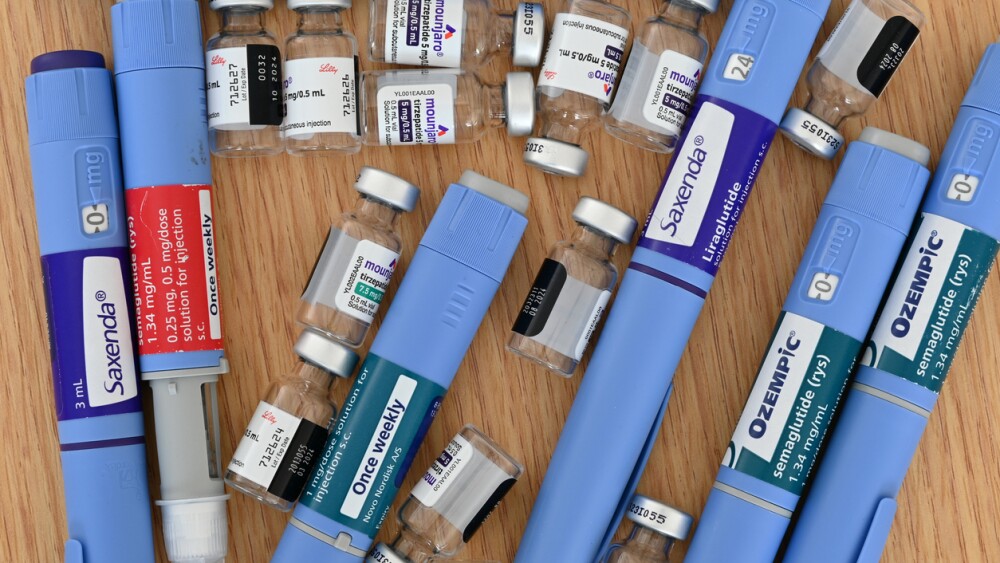Scaling GLP-1 manufacturing capacity remains a key priority for the pharma industry, to help supply catch up with the insatiable demand for weight loss drugs.
The FDA this week officially confirmed that shortages of Eli Lilly’s wildly popular GLP-1 drug tirzepatide—branded as Mounjaro for type 2 diabetes and Zepbound for weight management—are over, while the lowest dose of Novo Nordisk’s competing obesity drug Wegovy still has limited availability.
The regulator in a statement said Lilly has assured the FDA “that their stated product availability and manufacturing capacity can meet the present and projected national demand” for tirzepatide in the U.S.
BMO Capital Markets analyst Evan Seigerman in a note to investors on Thursday wrote that Lilly’s ability to maintain supplies of its blockbuster weight loss drugs is “a key differentiator” that could allow the company to continue to steal market share from Novo. Heading into third-quarter earnings season, Seigerman opined that “Lilly’s strength of supply could start to benefit the company.”
Lilly reports Q3 earnings on Oct. 30, while Novo is slated to release its financial results on Nov. 6. However, Q2 earnings from the rival pharma giants in August started to show that the competition between Wegovy and Zepbound is getting tighter, with Lilly closing the market share gap with Novo. The Danish drugmaker reported lower-than-expected Q2 sales for Wegovy, which were negatively impacted by supply shortages.
Doug Langa, Novo’s executive vice president of North America Operations, told analysts on the Q2 earnings call that the company will continue to “dynamically” manage supply with the Wegovy initiation dose strength of .25 milligrams to ensure that patients who begin treatment can continue without disruption. “We think it’s really important that patients are able to titrate through the appropriate doses,” Langa said.
However, with this lowest dose of Wegovy remaining on the FDA drug shortages list, GlobalData analyst Sara Reci warned that “these constraints have created a bottleneck in Wegovy’s market performance.”
Jefferies analyst Peter Welford echoed these sentiments in a Friday note to investors. “Scripts of the 0.25mg starter dose are -37% w/w and it is known Novo restricts this supply to constrain new patient starts, perhaps implying current supply bottlenecks, just at the time competitor Lilly has removed the shortages of Mounjaro/Zepbound.”
Next Wave of GLP-1s
So much attention in the GLP-1 space is on the Lilly-Novo duopoly, which is expected to retain around 70% of a potential $200 billion total market, according to a report last month from PitchBook and Morningstar. However, 16 new obesity drugs could launch by 2029, with approximately $70 billion of the GLP-1 market coming from these upstarts by 2031.
This week we got a reminder that companies developing next-generation weight loss drugs are on the horizon looking to challenge Lilly and Novo’s market dominance. In terms of Big Pharma competitors, Roche said at a Pharma Day event on Monday that three early-stage obesity and diabetes drug candidates from its $2.7 billion acquisition of Carmot Therapeutics could bring in more than $3.6 billion in annual sales.
In addition, several startups are also diving into the weight loss space.
On Tuesday, Kailera Therapeutics launched with $400 million in Series A financing as it looks to bring four China-developed injectable and oral candidates for chronic weight management to the market. That same day, Metsera announced a supply-focused partnership with Amneal Pharmaceuticals for its pipeline of next-generation weight loss therapies.
Emerging from stealth in April with $290 million in financing, Metsera is partnering with Amneal as the preferred supplier for MET-097—Metsera’s investigational, long-acting GLP-1 injectable—in the U.S. and Europe in exchange for undisclosed royalties.
Truist Securities analyst Les Sulewski predicted in a note to investors that Amneal, which will invest up to $200 million on a new manufacturing facility in India with partial funding from Metsera and the Indian government, could become the “supplier of choice” for next-generation GLP-1s.
“There appear to be no provisions from enabling Amneal to pursue additional GLP-1 contract-manufacturing partnerships, including current branded drugs plus those undergoing trials, including long-acting injectables,” Sulewski wrote. “Moreover, we think Amneal will have ability and appetite to capture the generics side post LOE [loss of exclusivity] around current branded GLP-1s.”
As the biopharma industry scrambles to meet the insatiable demand for these drugs, Amneal, it seems, has embraced an “if you build it, they will come” approach.






